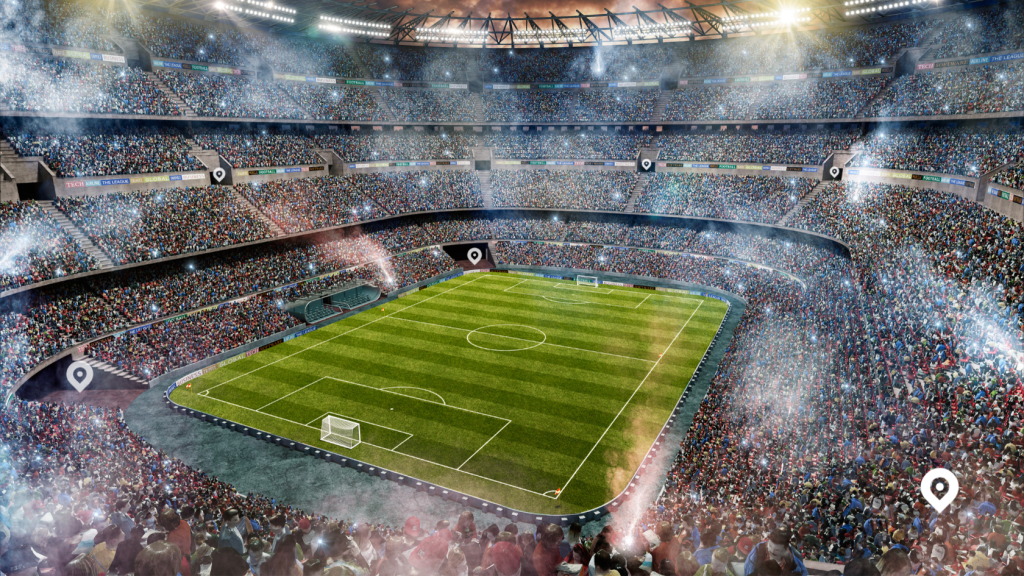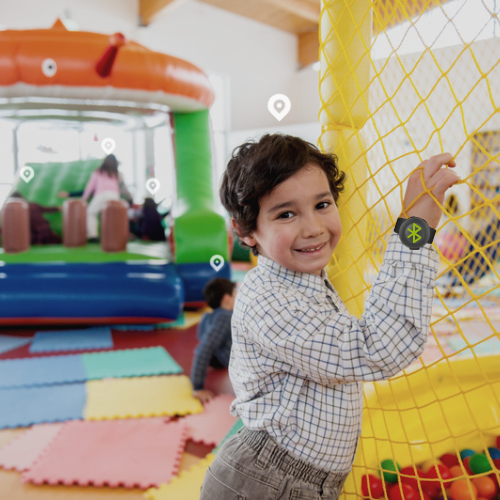Take the fan experience to the next level with RTLS (Real Time Location Systems). Give your fans and visitors an unparalleled leisure experience with indoor navigation for sports stadiums, event or concert halls. At the same time, RTLS increases fan engagement and loyalty to the sports club or event organizer. A navigation solution in a soccer stadium not only makes it easy for visitors to find their way around, but also gives you the opportunity to measure visitor flows or unlock additional marketing potential.
Leisure facilities such as indoor playgrounds, museums and shopping malls can also benefit from real-time location. This can be used for visitor navigation or the tracking of children with the help of a wearable device. RTLS also ensures the safety of visitors. Organizers can see where and how many people are present at any given time and react to problematic situations before they occur.
The benefits of RTLS for sports and leisure
Make it easy for your fans: Let them navigate from their car to the block at the next home game, send them a reminder for a cold drink at just the right time, and give them a 10% discount on their favorite player’s jersey for their loyalty. Sounds like the perfect fan experience, right? An RTLS solution for sports stadiums, consisting of indoor navigation and proximity marketing, makes it possible.
Real-time location can be easily integrated into an existing club app and branded to match your club’s identity. Manage PoIs, offers and push notifications on your own. Get your fans off the couch and build fan loyalty with RTLS!
More than 100,000 cruise guests already rely on Favendo’s location-based services on the high seas. Since 2017, 10 MSC Cruises cruise ships have been using our real-time location services. On a total of six ships, the indoor navigation is integrated into the “MSC for Me” app via an SDK in a CI-compliant way. The remaining ships use a static wayfinding solution with digital signage kiosk systems. Over the years, we brought RTLS to perfection on the cruise vessels. We take care of the planning, installation and monitoring of the entire sensor infrastructure. Favendo is the only provider to offer a completely self-sufficient tracking solution that can withstand the extreme conditions of the high seas and provide reliable positioning.
RTLS in sports. Best practice
Optimize the fan experience in the stadium: The Adler Mannheim App
RTLS in sports. Best practice
your personal contact person





